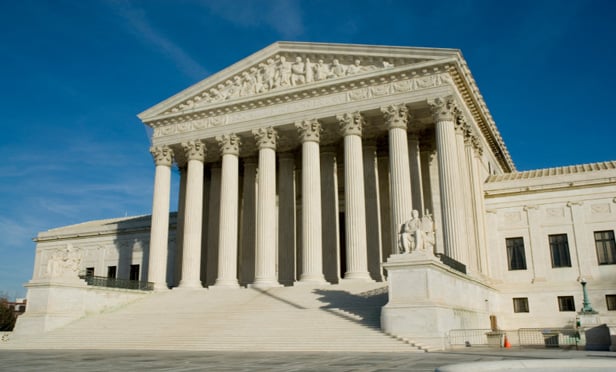Columns & Departments

Real Property Law
Ownership of Shifting Beaches<br>Brokerage Commission Provision Expired<br>Adverse Possession/Tennis Court<br>Deed Obtained by False Pretenses
Columns & Departments

Development
Negative Declaration/Time Bar<br>No Estoppel Against Village<br>Denial of Area Variance
Columns & Departments

Landlord & Tenant
Prior Judgment Does Not Bar Breach Claim<br>Accommodation of Disabilities
Features

25 Years After: Campbell v. Acuff-Rose and the State of Copyright Fair-Use Controversies
On March 7, 1994, the U.S. Supreme Court decided for the first time that a parody may be a copyright fair use. In the 25 years that followed, the High Court's unanimous 9-0 ruling in Campbell v. Acuff-Rose Inc., has been cited in more than 500 court decisions. But the Supreme Court's pronouncement left questions and controversies in its wake.
Features

Decision of Note: Race Discrimination Claims Against Charter Cable Can Proceed
The Ninth Circuit decided that a group of African-American-owned television networks can pursue racial discrimination claims against Charter Communications Inc., the nation's third-largest cable provider.
Features

FCA and Statute of Limitations: A Puzzle for the Supreme Court
The FCA is not a model of clarity. In a certiorari petition in United States ex rel. Hunt v. Cochise Consultancy, the U.S. Supreme Court will address an area of uncertainty that has led to a three-way circuit split regarding the FCA's statute of limitations. Depending on the outcome, FCA defendants could end up facing even more claims up to a decade old or, alternatively, have a new limitation on FCA actions upon which to rely.
Features

Second Circuit Affirms 'ReDigi': No 'Resale' of Digital Music Files
The U.S. Court of Appeals for the Second Circuit recently issued a long-awaited ruling in <i>Capitol Records LLC v. ReDigi Inc.</i>, affirming summary judgment in favor of Capitol Records and its record label co-plaintiffs in a case that raised issues of first impression concerning first sale and fair use in the age of digital music distribution.
Features

'Sophisticated' Losers
Why Commercial Fraud Claims Sometimes Fail, and the Importance of Due Diligence If a court decision called you "sophisticated," it was probably not intended as a compliment, but instead signaled the death knell of your fraud claim.
Features

Eighth Circuit Rejects Ponzi Scheme Presumption to Protect Legitimate Loan Repayments
In <i>Stoebner v. Opportunity Finance, LLC</i>, the U.S. Court of Appeals for the Eighth Circuit held that “… Ponzi scheme payments to satisfy legitimate antecedent debts to defendant banks could not be avoided” by a bankruptcy trustee “absent transaction-specific proof of actual intent to defraud or the statutory elements of constructive fraud — transfer by an insolvent debtor who did not receive reasonably equivalent value in exchange.”
Need Help?
- Prefer an IP authenticated environment? Request a transition or call 800-756-8993.
- Need other assistance? email Customer Service or call 1-877-256-2472.
MOST POPULAR STORIES
- The 'Sophisticated Insured' DefenseA majority of courts consider the <i>contra proferentem</i> doctrine to be a pillar of insurance law. The doctrine requires ambiguous terms in an insurance policy to be construed against the insurer and in favor of coverage for the insured. A prominent rationale behind the doctrine is that insurance policies are usually standard-form contracts drafted entirely by insurers.Read More ›
- A Lawyer's System for Active ReadingActive reading comprises many daily tasks lawyers engage in, including highlighting, annotating, note taking, comparing and searching texts. It demands more than flipping or turning pages.Read More ›
- The Brave New World of Cybersecurity Due Diligence in Mergers and Acquisitions: Pitfalls and OpportunitiesLike poorly-behaved school children, new technologies and intellectual property (IP) are increasingly disrupting the M&A establishment. Cybersecurity has become the latest disruptive newcomer to the M&A party.Read More ›
- Abandoned and Unused Cables: A Hidden Liability Under the 2002 National Electric CodeIn an effort to minimize the release of toxic gasses from cables in the event of fire, the 2002 version of the National Electric Code ("NEC"), promulgated by the National Fire Protection Association, sets forth new guidelines requiring that abandoned cables must be removed from buildings unless they are located in metal raceways or tagged "For Future Use." While the NEC is not, in itself, binding law, most jurisdictions in the United States adopt the NEC by reference in their state or local building and fire codes. Thus, noncompliance with the recent NEC guidelines will likely mean that a building is in violation of a building or fire code. If so, the building owner may also be in breach of agreements with tenants and lenders and may be jeopardizing its fire insurance coverage. Even in jurisdictions where the 2002 NEC has not been adopted, it may be argued that the guidelines represent the standard of reasonable care and could result in tort liability for the landlord if toxic gasses from abandoned cables are emitted in a fire. With these potential liabilities in mind, this article discusses: 1) how to address the abandoned wires and cables currently located within the risers, ceilings and other areas of properties, and 2) additional considerations in the placement and removal of telecommunications cables going forward.Read More ›
- Guidance on Distributions As 'Disbursements' and U.S. Trustee FeesIn a recent case from the Bankruptcy Court for the District of Delaware, In re Paragon Offshore PLC, the bankruptcy court provided guidance on whether a post-plan effective date litigation trust's distributions constituted disbursements subject to the U.S. Trustee fee "tax."Read More ›
